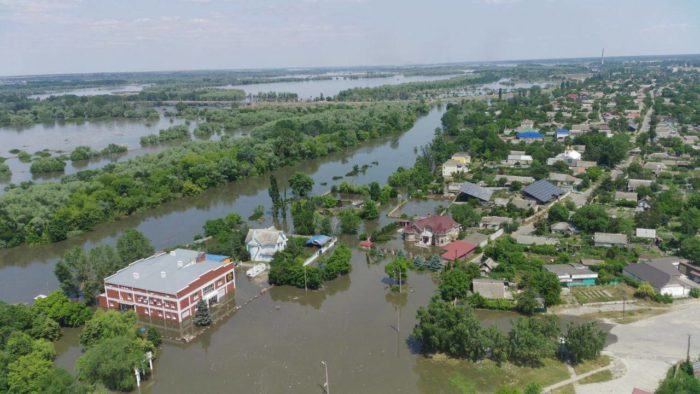"We need help, grandpa is alone, the first floor is flooded, he has problems with his legs, running out of food and water, help!"
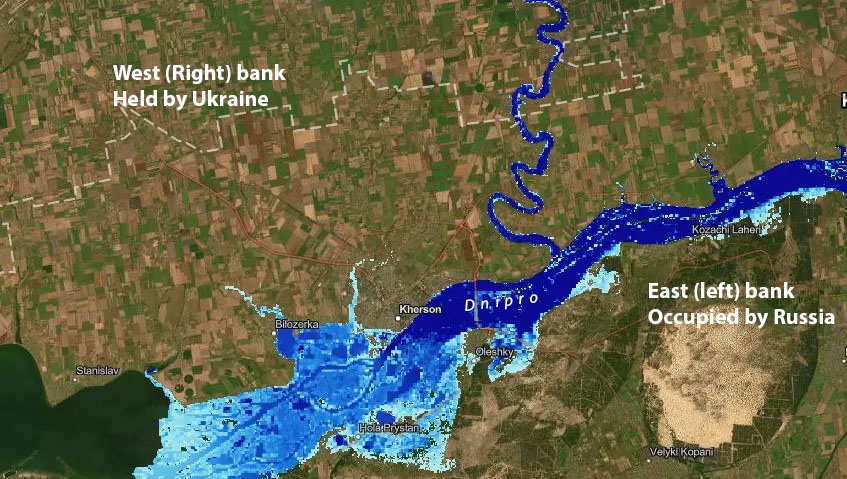
A grassroots evacuation initiative
Oleshky
Kvitkova 22 🆘🆘
Water already up to her chest, woman over 100 kg, CAN'T climb on the roof!!! Please help!
#evacuation #seniors
We translated some of the messages shared in the group and included them throughout this article.
"We contacted the Russian Ministry of Emergency Situations for help several times, but our applications were ignored, and there was no indication of rescue efforts of all. I started suspecting that nobody wanted to rescue them and they would simply drown. That's why I created the chat, started posting calls for help in social media. On 7 June, we managed to rescue the first family."Yaroslav started coordinating the rescue efforts, found ways to buy boats and deliver them into a city sealed off by Russian troops. The Russian Ministry of Emergency Situations even wanted to confiscate the boats, but the volunteer rescuers managed to hold onto them.
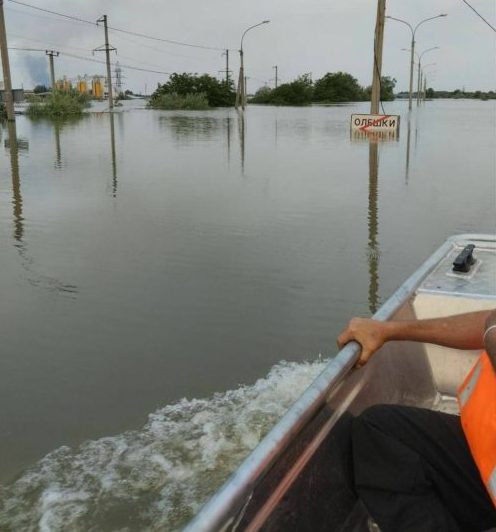
Volunteers blocked from entering city; only Russian passport-holders allowed to leave
We got in touch with Olha, a 33-year-old mother of two who managed to evacuate from Oleshky in April but has relatives and friends living in the flooded village:"I am in a state of total shock all these last six days; my hands start shaking every time I pick up my cell phone."She has followed how Oleshkovites united to save each other since the flood was unleashed on the night of 6 June.
"On June 6, it was terrible. People almost had no boats, as the Russian military confiscated them beforehand. Those who managed to hide a few boats tried to help each other, because the Russian military not only did not inform people that the dam was blown up, they did not evacuate anyone, and even closed off the city. That is, they blocked the roads that were not yet flooded and allowed only people who had Russian passports to leave," Olha says. "Only those who had them, and access to the internet, could have fled the city when news of the dam breaking came in."
Coercing the Ukrainian population to accept Russian passports is a strategy Russian occupation forces use to exert its control over locals and to potentially mobilize the men of those territories to fight against the Ukrainian Army. Refusing to take these Russian passports, and therefore be counted as Russian citizens, is an act of Ukrainian defiance, while collaborators with the Russian occupiers usually take them gladly. Russia also pressured vulnerable locals into accepting the passports by withholding social services and aid.
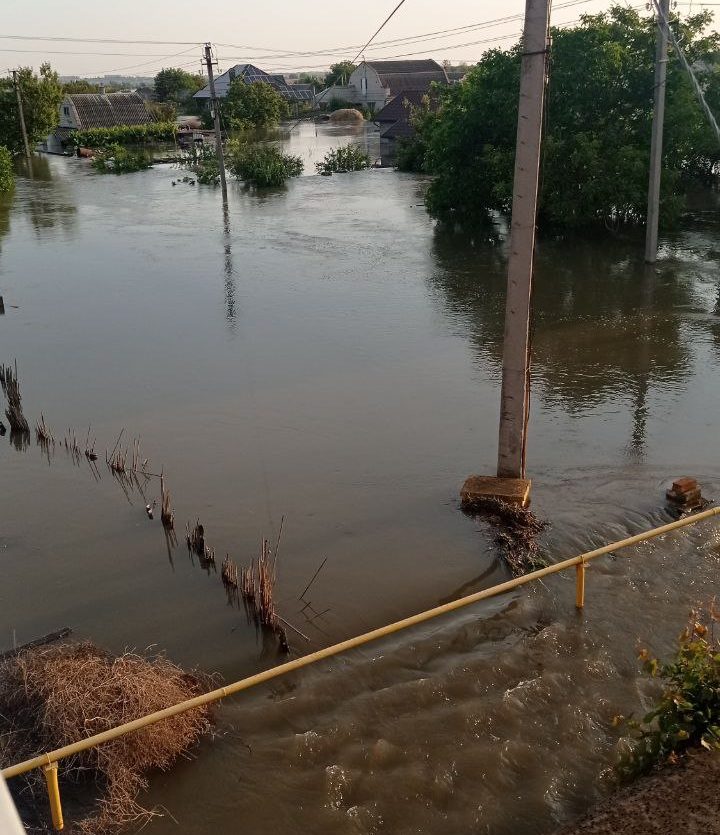
"They allow the elderly to leave, parents with children, single moms; but mid-age Ukrainians without Russian passports are not permitted. The Russian military even organized evacuation for such categories, but only on the third day," Olha shares.This trend was observed throughout over a year of occupation: Ukrainians from vulnerable social categories were more or less well off under the Russians, receiving humanitarian aid and social benefits. Meanwhile, the self-sufficient ones were deprived of livelihood opportunities and merely survived without any jobs. Yaroslav confirms that Russians indeed block Ukrainian passport holders from leaving the territory: in case, such people were permitted to leave to Crimea, but in many other cases, Russian troops turned around those who refused Russian passports, particularly at the checkpoint in Radensk.
"People returned home after being turned back, waited for the flood, and then tried to escape again," Yaroslav recalls.The men who still had boats wanted to go out to help those living in the coastal areas in the night of 6 June, because they already started to get flooded after the dam was blown up around 2 AM. However, the Russian soldiers prevented them from doing this: they fired at them and said they could not move in the night during the curfew.
"On 7 June, I wrote to my colleague; now, she's a woman over 50, and she was simply screaming: 'Olia, we are being destroyed here, because we are not allowed to evacuate one another. The Russian military told us: whoever doesn't drown, we'll shoot you,'" Olha recalls. "But Oleshky men were great; the ones that had boats were going around the city and trying to help. They were going to get their relatives, and when you're going to a building and hear people sitting on the roof and begging 'Please save us,' you can't simply pass by."Meanwhile, the evacuation is getting more and more difficult, says Yaroslav. Right now, only Oleshky locals are conducting the rescue operations by boat. But Russian troops prevent volunteers with supplies or boats from entering the city.
"I am not 100% sure why they are doing this, but one Russian volunteer woman from Moscow got in touch with me; she was in contact with the local authorities and the Ministry of Emergency Situations. She let me know that the Russians are preventing our operations because they think we are all saboteurs; they are afraid that we will use the boats to get Ukrainian soldiers on the right [west] bank. We don't trust them; they don't trust us, and so cooperation is impossible, and an unimaginable catastrophe is taking place," Yaroslav explains the Russian occupation troops' inaction.
Russian troops prevent evacuation of Ukrainian civilians to Ukrainian-controlled territory
Fortunate incidents of residents of the Russian-occupied east-bank region crossing the Dnipro to Ukrainian-controlled territory do happen, but only the bravest attempt: the strong current of the unleashed river washes away boats attempting to cross the formidable water artery.Ukrainian army rescues mom and kids trapped in flooded Russian-occupied territoryOlha says that exiting by land is impossible: Russian soldiers with guns stand at checkpoints and "control every step" of those attempting to flee the disaster.
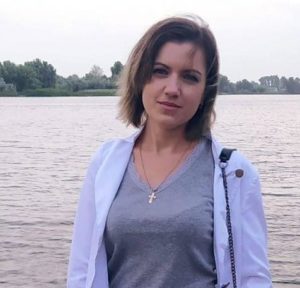
"I believe this was Russian shelling, as mere seconds separated the outgoing and and incoming fire," Yaroslav says. "These are the people who conduct only a selective evacuation, take out only Russian passport-holders. We are forced to cooperate with the Russians to hand out humanitarian aid. Can you imagine that the [Russian quisling] administration hands out crucial medicine like pressure meds for stroke survivers based on Russian passports? It's simply genocide."
Deaths by drowning and Russians marauding homes
Guys please advise what to do with the corpses? Maybe someone has some information. Thanks. Oleshky
Cosmonauts 50! Please! Get my mom out🙏🙏🙏🙏 I think my brother must have drowned by now, he's bedridden
"Corpses are starting to float up, and these are only the ones who fell off the roof or were somewhere on the street. When the water goes down, we will find many more corpses, because many people could not leave their houses," Olha explains.
"Neighbors said they saw a woman with two baby twins fall off the roof -- they simply could not hold on to it. They drowned. Imagine all the people 80-85 years old. Could they climb on their roofs?" Olha tells about a region of the city where floodwaters were three meters deep.Moreover, Russian troops started marauding flats abandoned by fleeing Oleshky locals. Olha mentions a local chat where those who managed to evacuate from the city earlier allowed those who were left to use their flats in apartments spared by the flood, only to discover that Russian troops occupied them.
"Not only do they destroy these flats, but they also strip them bare. They are simply marauders," Olha shares.
Why are the Russians doing this?
"I have the impression that they simply wanted to destroy the people who put up resistance. Ukrainian collaborators on these lands were rare, and there were many people who resisted taking Russian passports till the last," Olha says.
Great news, found a granny and grandpa on Dniprovska 53, grams is bedridden, and gramps was on his last breath, were without food without water, very skinny, who can pick them up on the ground on vul. Dekabristov (repost)
"I know of an elderly couple whom neighbors took off the roof tried to evacuate to the nearby village. At a checkpoint at the exit to Oleshky, Russian troops let the neighbors pass because they had Russian passports; the elderly couple was checked for eight hours and then not permitted to leave.
I think this was simply an extermination of the Oleshky residents who were waiting for the Ukrainian army to come any day and liberate them. They never imagined that such a catastrophe could take place in our city," Olha adds.
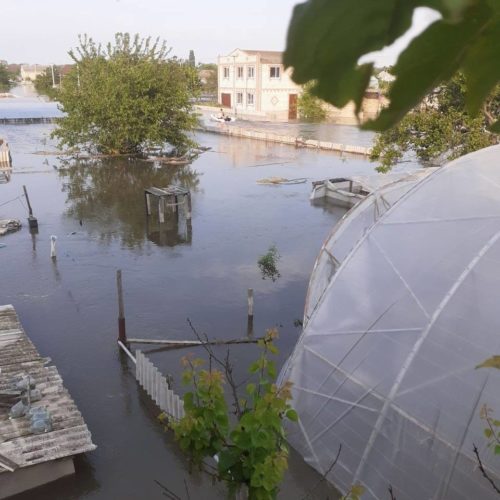
"I can't make sense of many things after the dam's destruction. Now that I found out about all the processes and horror going on, I can't name a reason. It's simply a genocide. People are being killed on purpose."
Urgent evacuation needed, Khutoryshche, Chasnyk Lane 21; there are 14 people in a two-story house, including 3 children. They need to be evacuated urgently, because they are on the second floor, and water has already reached it. Please help, everyone who cares!!!
Water subsides but catastrophe only starts
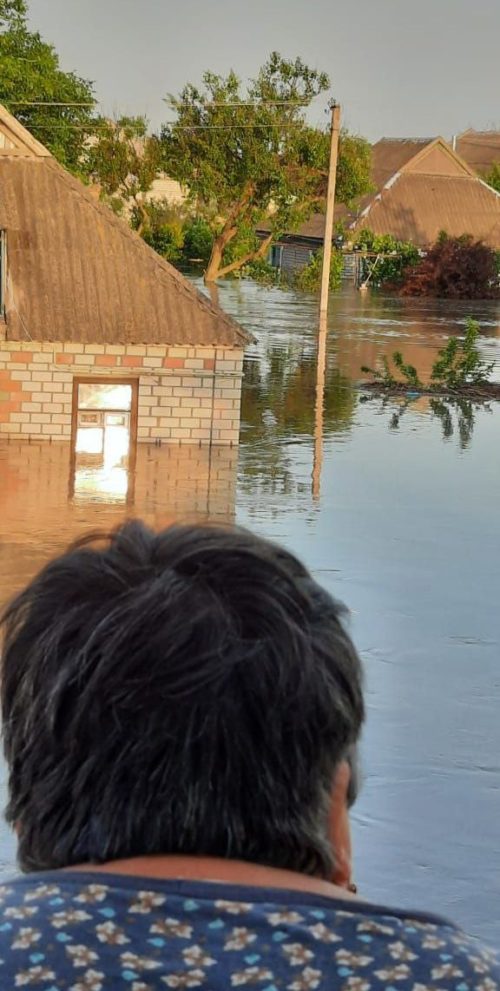
Today my friends reached vul. Dekabrystiv by boat very many animals on roofs and cats on trees all asking for rescue. Please help save the pets🙏 They are sitting there waiting😭 and can't call for help they have no strength left. And so it is on every flooded street. At night you hear howling and whining😭
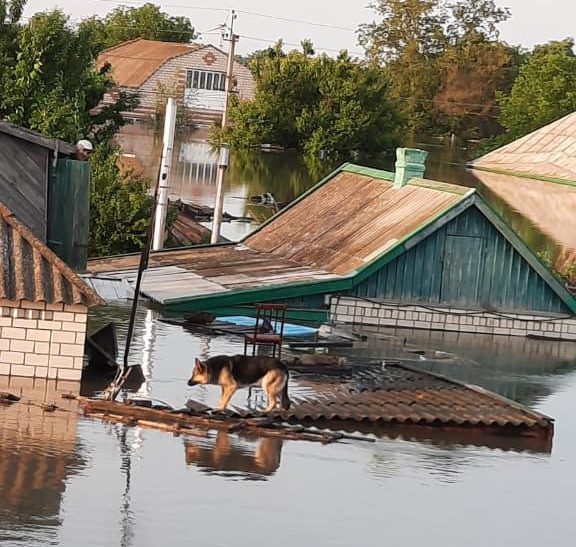
Grassroots evacuation saves lives while Russian troops and international organizations stand by
"A gigantic catastrophe has taken place. They want to close off entry and exit to all settlements, they will start conducting filtration measures, even more people can die, and no international organization is helping, except for media. This situation needs the utmost attention! We need to call on all the forces to solve this situation. We need a green corridor. This is urgent!" Yaroslav exclaims.So far, his Telegram chat is the only initiative trying to save human lives in the flooded areas of Russian-occupied Ukraine. The community has grown to 60 volunteers who self-organized, started making lists of people who needed to be rescued, and geolocating the requests. In other cities, such as Nova Kakhovka where the dam is situated, the Russians conducted at least some sort of evacuation. But settlements around Hola Prystan and Oleshky were sealed off by the Russians.
"When I started the Telegram group, I expected it to be a rescue mission only for Oleshky. But because no evacuation was organized, in the next days, more and more settlements appealed for help. We coordinate rescue efforts for the entire left [east] bank, at least 10 settlements, except those near Nova Kakhovka," Yaroslav shares.
I would like to thank the volunteers who brought drinking water to the dachas of Khmelnytsky Hospital 1 today. You are incredibly cool and awesome for saving other people at the cost of your own lives! You overcome distances, danger, communicate with them, and help them with water. Thank you for your humanity!!!!!! And for your work! You motivate us not to lose hope!
May God protect you!
You are our heroes! I wish you strength and endurance!
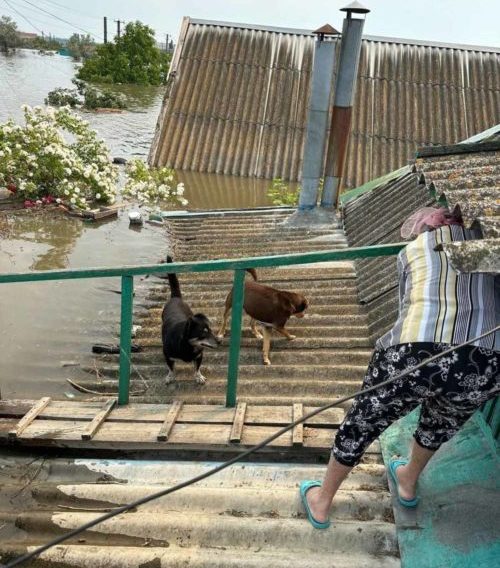
"It's all clear with the Russian occupiers, they couldn't care less. But how could it be that no international organization intervened, did simply nothing!" Olha exclaims.According to Ukrainian official data, 32 settlements were flooded on the Ukrainian-controlled territory of Kherson Oblast and 14 on the Russian-occupied part. 2,699 people have been evacuated, at least five were killed, and 29 are missing. In the neighboring Mykolaiv Oblast, 31 settlements were flooded, and 982 people were evacuated. 18 cubic kilometers of water gushed out of the dam of the destroyed Kakhovka Hydropower Plant when a blast breached it on the night of 6 June, flooding the towns in the delta of the Dnipro. Ukraine accuses Russia of blowing up the dam from within, a statement supported by seismic stations registering the explosion, earwitnesses hearing it, Russian soldiers telling about it, and engineers telling it is the only possible way to destroy such a sturdy construction.
We are not naming the last names of our interlocutors out of concerns for their safety; audio intercepts of the conversations can be provided to journalists upon request.
Related:
- Earwitnesses recall hearing explosions on night when Nova Kakhovka dam collapsed
- Seismic signals indicate Kakhovka dam explosion – NORSAR
- Russian sabotage group blew up Kakhovka dam; it didn’t go as planned, SBU intercept alleges
- Kakhovka Dam was built to withstand nuclear strike, couldn’t be destroyed from outside – Ukrhydroproject engineering company

